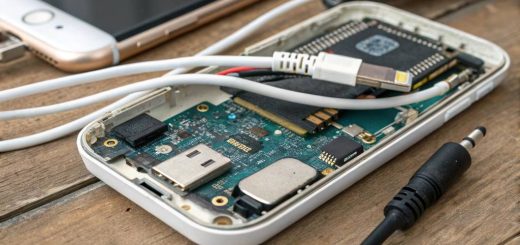Android Security: Breaking Down the New Biometric Authentication Features
Forget fumbling with complex passwords or easily-guessed PINs. The way we secure our Android devices is rapidly evolving. Biometric authentication, which uses your unique physical characteristics to unlock your phone or authorize actions, is becoming increasingly sophisticated. In this article, we’ll delve into these exciting enhancements and how they bolster the security of your Android device.
Beyond Basic Fingerprints: The Rise of Advanced Biometrics
Fingerprint scanners have been an Android staple for years. However, recent biometric innovations take this a step further:
- Facial Recognition Evolved: Many Android devices now incorporate advanced facial recognition systems. Instead of simple 2D image comparisons, they often utilize 3D mapping or infrared depth sensing. This creates a detailed model of your face, making it more difficult to fool with photographs or videos.
- Iris Scanning: Select high-end smartphones boast iris scanners. These capture the intricate patterns of your iris (the colored part of your eye) for exceptionally secure authentication. Iris patterns are highly unique, even between identical twins.
The Benefits: Convenience and Security Amplified
Why is biometric authentication gaining popularity with a fervor? Here’s the draw:
- Seamless Unlocking: A quick glance or a touch of your finger is all it takes to unlock your phone. It’s faster and more intuitive than typing passwords.
- Harder to Crack: Your fingerprint or face is far more difficult for someone else to replicate than a numeric PIN code or a swipe pattern.
- Enhanced App Protection: Many apps (like banking or password managers) allow you to use biometric authentication for an extra layer of security, offering greater peace of mind.
A Word on Security: Biometrics Aren’t Foolproof
Biometric authentication is remarkably strong, but it’s important to understand it isn’t unbreakable. Here are a few things to keep in mind:
- Presentation Attacks: Early biometric systems could sometimes be tricked using photos, models, or even high-quality replicas of fingerprints. Modern advanced systems are far more resistant, but not entirely immune.
- Security vs. Convenience: The most secure settings may have a trade-off. For instance, requiring both face and fingerprint may be less convenient than using just one.
- Data Storage: Your biometric data is stored securely on your device. However, it’s crucial to choose reputable phone manufacturers who prioritize data protection and have strong encryption measures.
Customizing Your Android Security Experience
Android offers flexibility to fine-tune how biometrics work for you:
- Multiple Enrollments: You can typically register multiple fingerprints or even different face angles to account for changes in your appearance (wearing glasses, etc.).
- Sensitivity Adjustments: Some systems allow you to control how strict the biometric match needs to be. Higher sensitivity means greater security, but potentially more failed login attempts.
- Backup Methods: Always set up a strong password or PIN as a backup to biometrics. This ensures you can access your phone even if there’s an issue with the biometric sensor.
The Future of Android Biometrics
The landscape of biometric authentication is constantly evolving. Here’s what could be on the horizon:
- Under-Display Fingerprint Sensors: Many phones have in-screen fingerprint sensors. Advancements mean these will become faster and more responsive.
- Behavioral Biometrics: This analyzes patterns like how you hold your phone, your typing style, or your gait as a unique identifier. It could add a continuous authentication layer.
- Multimodal Systems: Combining multiple biometrics (face + fingerprint + voice) could offer the gold standard in security, ideal for the most sensitive applications.
The Takeaway
Biometric authentication provides a robust and user-friendly upgrade to your Android security toolkit. By understanding the different technologies, their capabilities, and their limitations, you can make informed choices for protecting your phone. Stay updated on the latest advancements as this rapidly developing field of security promises to bring even more convenience and protection in the years to come.










